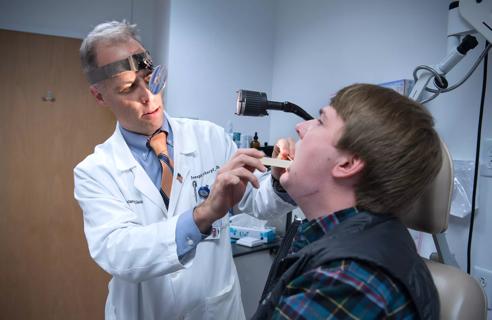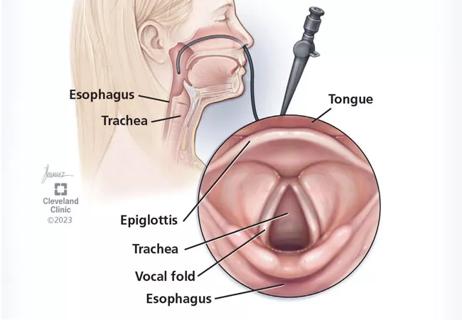Study finds no significant difference between diagnostic yield of CT and MRI in unilateral sensorineural hearing loss

A new, multi-institutional study finds no significant difference in the diagnostic yield of computed tomography (CT) and magnetic resonance (MR) imaging in cases of pediatric unilateral sensorineural hearing loss (USNHL). Following comprehensive audiometric evaluation, clinicians should take an individualized approach when considering the advantages and disadvantages of these imaging modalities.
Advertisement
Cleveland Clinic is a non-profit academic medical center. Advertising on our site helps support our mission. We do not endorse non-Cleveland Clinic products or services. Policy
Imaging studies are an important component of the diagnostic workup of patients with suspected USNHL. Recent research has shown that inner ear abnormalities are found in approximately one-third to two-thirds of pediatric UNSHL patients who undergo imaging studies; however, there is debate about whether CT or MR imaging is more appropriate.
“Many times, CT can be easily attainable in children because it’s fast and children are not required to be still for long period of time,” says Samantha Anne, MD, an otolaryngologist at Cleveland Clinic and the study’s senior author, “but it does involve exposure to radiation. There is no radiation exposure in MR, but it takes so long that children often need to be sedated, which carries risk, and is about twice the cost of CT.”
To determine whether one test is better than the other, researchers reviewed the charts of 219 pediatric patients with confirmed USNHL from Cleveland Clinic, Emory University/Children’s Healthcare of Atlanta and Texas Children’s Hospital. Results indicate that there is similar diagnostic yield from both CT and MRI testing.
This group included 123 patients who underwent CT imaging only. Nearly 37% of these tests yielded positive findings. The most common findings in the CT-only group were enlarged vestibular aqueducts, cochlear deformities, internal auditory canal (IAC) hypoplasia/aplasia, semicircular canal abnormalities and labyrinthine dysplasia.
Of the 31 patients who underwent MRI only, 52% positive findings. The most common positive findings in MRI-only patients were cochlear nerve hypoplasia/aplasia and intracranial abnormalities.
Advertisement
Sixty-five patients had both CT and MR imaging studies. Results of CT and MR imaging were concordant 88% of the time, which is a higher rate of concordance than reported in previous research. Within the CT-and-MRI cohort, abnormalities were identified in 26 (40%) of the patients via only one of the two testing modalities and 23 (35%) had abnormal findings on both CT and MRI. Of the three (12%) of patients who had positive findings in only one test modality, two had positive MRI findings (cochlear nerve aplasia) but normal CTs, and one had a positive CT finding (dehiscence of vestibular aqueduct) but a normal MRI.
“Given the degree of similar diagnostic utility and concordance in CT and MR imaging studies, we advocate for an individualized approach to selecting the type of imaging,” Dr. Anne states. “This individualized approach should take into account the patient’s age and clinical presentation, cost, risk from radiation exposure vs. for sedation, parental preference, and the diagnostic accuracy of the imaging modality given the suspected etiology.”
Affecting 3-5% of the pediatric population, UNSHL is considered fairly common; however, it is frequently underdiagnosed until children reach school age. UNSHL is associated with increased likelihood of learning difficulties, academic delays and behavioral issues. Given the potential of these effects to impact the course of a patient’s life, patients and their families benefit from early diagnosis and treatment, which may include genetic and lifestyle counseling. Patients are advised to follow-up regularly with audiology and periodically with otolaryngology.
Advertisement
According to Dr. Anne, “studies show these children exhibit speech and language delays. They are at risk for education problems, including an increased rate of failing a grade, the need for educational assistance in the classroom, and perceived behavioral issues. Amplification using hearing aids can help in many cases, so identifying the cause and extent of hearing loss when patients are still young may have a significant impact on their lives.”
Advertisement
Advertisement

New system brings much-needed clarity and guidance for moderate to advanced-stage disease classifications

Prompt, multidisciplinary care helps navigate the complexities of a rare condition

Looking at short-term outcomes in a high-risk population

Recommendations look to change mindset with CI referrals

Research aims to better understand the tumor immune micorenvironment

Research could help direct care pathways for patients with unexplained swallowing difficulties

Strong communication with the patient and a thorough approach are essential

Cleveland Clinic physicians weigh in